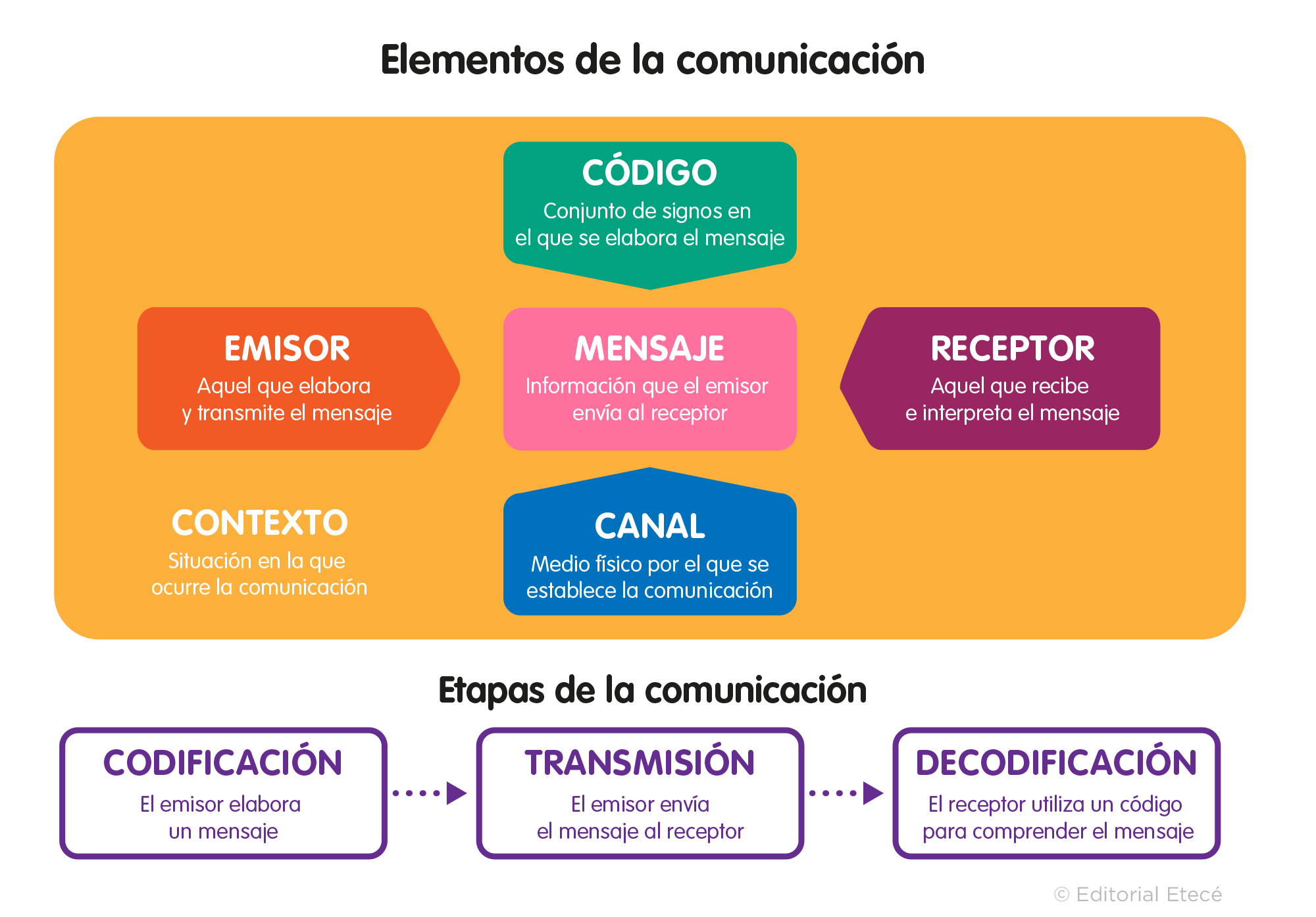We explain what code is in communication, the types of code that exist and examples. Also, what are encoding and decoding, and other elements of communication.

What is code in communication?
Among the elements of communication, the code It is the language in which the message is transmitted from sender to receiver: The sender encodes the message and the receiver decodes it to understand it. In everyday speech, it is what is known as language or tongue.
The code is a system, that is, a set of signs and rules. In languages, signs are words that, through certain combination rules, allow messages to be created and understood. The code is essential for the communication process to take place: the sender and the receiver must use the same code Otherwise, the message will remain encrypted and undecrypted, as happens when two people speak different languages.
However, there are also other codes that are systems of signs or symbols, but are not languages, such as the set of traffic signs.
See also: Elements of communication
Types of communication code
Depending on whether or not they contain words, the codes They can be linguistic or non-linguistic.
linguistic code
A linguistic code is one that is made up of words and its rules of use and combination, that is, any language. This type of code is only used by humans.
Linguistic codes can be of two types:
- Oral or natural linguistic codes. They are perceived through the senses (hearing or sight, in sign language) and are transmitted from parents to children spontaneously. They are instantaneous, ephemeral and face-to-face, and rely on extralinguistic elements.
- Written linguistic codes. They are necessarily perceived through reading, which is why they require formal learning and teaching. They are permanent and planned, can be deferred and have stricter rules.
Non-linguistic code
A non-linguistic code It is made up of signs that are not words, such as images and sounds. This type of code can be used by any living being, but some are specific to humans, such as the lights of a lighthouse.
Non-linguistic codes can be:
- Visual non-linguistic codes. They are transmitted through images or movements and are perceived with the eyes. For example: smoke signals.
- Auditory non-linguistic codes. They are transmitted through sounds and are perceived with the ears. For example: the howling of wolves.
- Non-linguistic gestural codes. They are produced through gestures, generally voluntary. For example: a smile.
See also: Interpersonal communication
Code examples in communication
The following are code examples:
- The languages humans. They are languages such as Spanish, Chinese, Greek, English or French.
- morse code. It is an artificial code that, through a combination of different sounds or visual signals, is used to represent letters and numbers.
- The binary code. It is one that only contains two signs, 0 and 1, and is used in various disciplines, such as computing.
- The set of public signs. It is the code that indicates what drivers and pedestrians can and cannot do, and that transmits relevant information about roads or public space.
- The braille system. It is a tactile code that allows letters, numbers and other symbols to be represented for blind people.
- The sounds emitted by whistles. They are sounds that represent different meanings in different contexts, such as danger or alert.
- The use of cards in a soccer match. It constitutes a code whose meanings are represented by two cards (red and yellow), which can indicate a warning, penalty or expulsion.
- The international code of maritime flags. It is a set of different flags that, depending on the combination and shape of their colors, represent letters and numbers.
- smoke signals. It is a code that, depending on the color and shape the smoke takes, transmits different messages.
- The colors of the traffic light. It is a three-color code (red, yellow and green), which indicates whether cars should go forward or stop.
The code in the elements of communication

In every communication process, various elements are involved, in addition to the code:
- Transmitter. He is the one who starts the communication process, because he generates the message using a specific code. For example, if a person wants to ask another person for directions, they will use the signs of their language, that is, a linguistic code, to elaborate their message.
- Receiver. He is the one who receives the message and decodes it to understand its meaning. Communication is only possible if the sender and receiver share the same code. For example, if a person is asked for an address, they will only be able to understand this request for information if they speak the same language as the sender.
- Channel. It is the physical medium through which the message is transmitted, such as sound waves or paper. The channel and the code influence each other, because depending on the channel used, only some codes can be chosen, and vice versa. For example, if a person decides to write a letter, the channel will be paper and the code will necessarily have to be written linguistic code.
- Message. It is what you want to communicate. Depending on the information you want to transmit, you choose between different codes, so that the message is perceived correctly by the receiver. For example, to ask for an address, the oral linguistic code is the most appropriate.
- Context. It is the set of circumstances in which the communicative event occurs. It affects the code that is chosen to create the message, since, depending on the situation, there are codes that are more convenient than others. For example, the set of traffic signs is the most suitable code for conveying messages to drivers on the roads.
Encoding and decoding

In the communication process, the code is used in two moments:
- Coding. The sender uses a code to transmit information, because he translates his thoughts into the signs that make up the message.
- Decoding. The receiver uses the code to understand the transmitted information. It decodes the message, because it understands the signs of the code and can interpret its meaning.
document.addEventListener(“DOMContentLoaded”, (e) => {
var sliderContainer, slider;
sliderContainer = document.getElementById(‘block_d55fa3136cf8c2308b598bf8ba0453cf’);
if (typeof initSlider !== ‘function’) {
console.log(‘Swiper haven\’t been loaded’);
sliderContainer.className += ‘ fw scroll-snap’;
return;
};
options = {
direction: ‘horizontal’,
speed: 1000,
slidesPerView: ‘auto’,
// slidesPerGroup: 1,
centerInsufficientSlides: true,
// centeredSlides:true,
spaceBetween: 15,
breakpoints: {
720: {
// centeredSlides: false,
// slidesPerGroup: 2,
spaceBetween: 25
},
},
pagination: {
el: ‘.swiper-pagination’,
type: ‘bullets’,
clickable: true
},
}
slider = initSlider(sliderContainer, options);
})
References
- Gavidia Anticona, JA (2015). Language and communication. Editions of the U.
- Generalitat Valenciana. (sf). The channel, the code, the context and the registry. Basic competencies II. Castilian. https://ceice.gva.es/
- Jakobson, R. (1974). General linguistics essays. Six Barral.
- Lemma, J. (2001). The natural language. Iztapalapa Magazine of Social Sciences and Humanities(50), 257-270.





